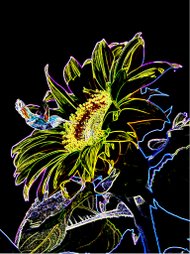Introduction
This article will show you how to easily build a beautiful indoor/outdoor fountain using glazed pottery. This can make a nice patio or greenhouse feature or even be used as a decorative room humidifier that will not get clogged like traditional humidifiers.
Things You Need
Three or four glazed ceramic pots of graduating size
Plastic pots or containers slightly smaller than the large and second largest pot
Submersible water pump (approximately 150GPS)
Tubing to fit the pump
100% silicone (small tube)
1 small plastic saucer
Water seal to seal inside the pots if they are not glazed on the inside
Small decorative river rocks for the top pot
Step 1
Use spray on water seal to seal the inside of the pots. Thompson’s makes a good multi surface spray on water seal that can be purchased at most hardware stores. The pots are generally already semi-waterproof, but this helps to extend their life. If they are not glazed on the inside paint them with Dry Lock.
Step 2
Seal the hole in the bottom of the largest pot that will serve as the fountain reservoir. To do this, turn the pot upside down and use 100% silicone sealer to glue a small piece of plastic over the hole. Cut the plastic piece about twice as large as the hole. Any flat thin plastic will do. One easy to find source is to cut these out of clear plastic plant saucers. Next, turn the pot back over and fill the hole inside completely with silicone and even a little extra for a good seal. This should dry 6-8 hours before water is added to the fountain.
Step 3
Install the pump and feed tube. Cut a piece of tubing long enough to reach the top of the fountain. Make it a little long. The extra can always be cut after the fountain is fully assembled. Generally the tubing will fit tight on the pump spout and a hose clamp is not necessary, but if needed, use a hose clamp to make sure the feed tube stays attached to the pump.
Step 4
Prepare plastic riser pots. These can be any plastic container that is the right size and strong enough to hold the pots above. Two of these will be needed, one that is one inch shorter then the largest pot and one that is one inch shorter than the second largest pot. Each will need to be the proper diameter to fit inside the corresponding pot. A good place to find inexpensive plastic containers for this is the local dollar store. Once suitable containers are located, drill a hole in the bottom of each that is just large enough for the feed tube to pass through. Use the same bit to drill two or three holes in the side of each container for water to pass through. Cut a small notch in the top of the larger container for the pump electrical wire to pass through.
Step 5
To assemble the fountain, first place the pump in the bottom of the largest pot. Then turn the larger riser container upside down and thread the feed tube up through the hole in the bottom so the container slides down and covers the pump. Next, place the second largest pot on top of the first riser container, threading the feed tube up through the hole in the bottom of the pot. If the hole in the pot is much larger than the tubing, use silicone to caulk the hole around the tubing. This will ensure that most of the water flows over the pots rim, rather than down through the bottom hole. Follow this same procedure with the second riser container and the final top pot.
Step 6
Cut the feed tube off about one inch from the top of the top pot and fill the pot with decorative rocks up to the top of the feed tube. Depending on the GPH of the pump and the height of the fountain the feed tube may need to be cut more than one inch from the top of the top pot to keep water from spraying too far. It may also be necessary to hold a hand over the feed tube opening when the pump is first turned on to muffle the water coming out of the feed tube until the water can fill to the top of the pot and muffle the flow. With a fountain that is around two feet high and a 160gph pump, cutting the feed tube 1 inch below the top will generally create a nice bubbling effect and sound without excess splashing.
Building a fountain is a rewarding experience and they certainly add beauty to any garden or indoor setting.
Subscribe to:
Post Comments (Atom)



No comments:
Post a Comment